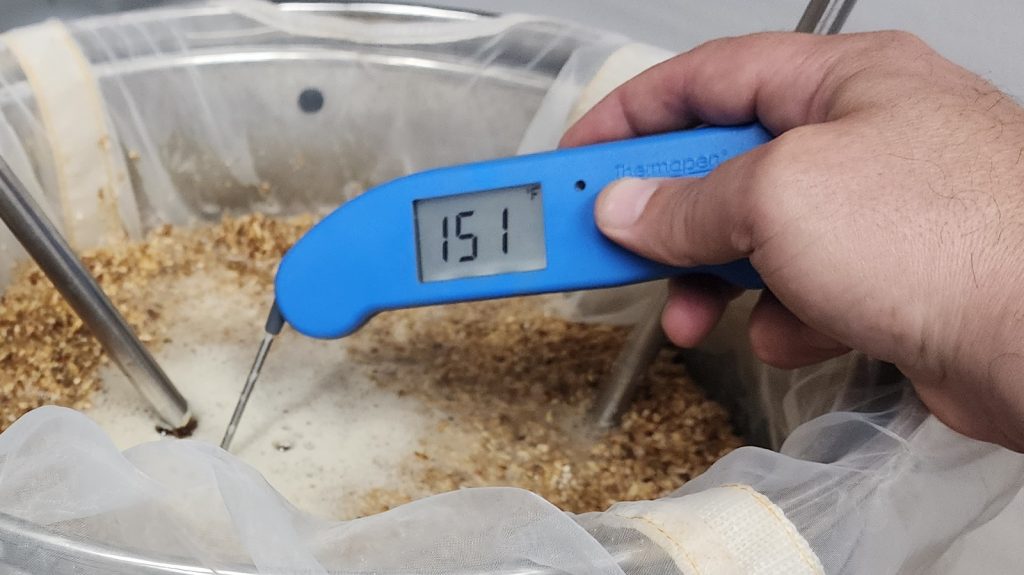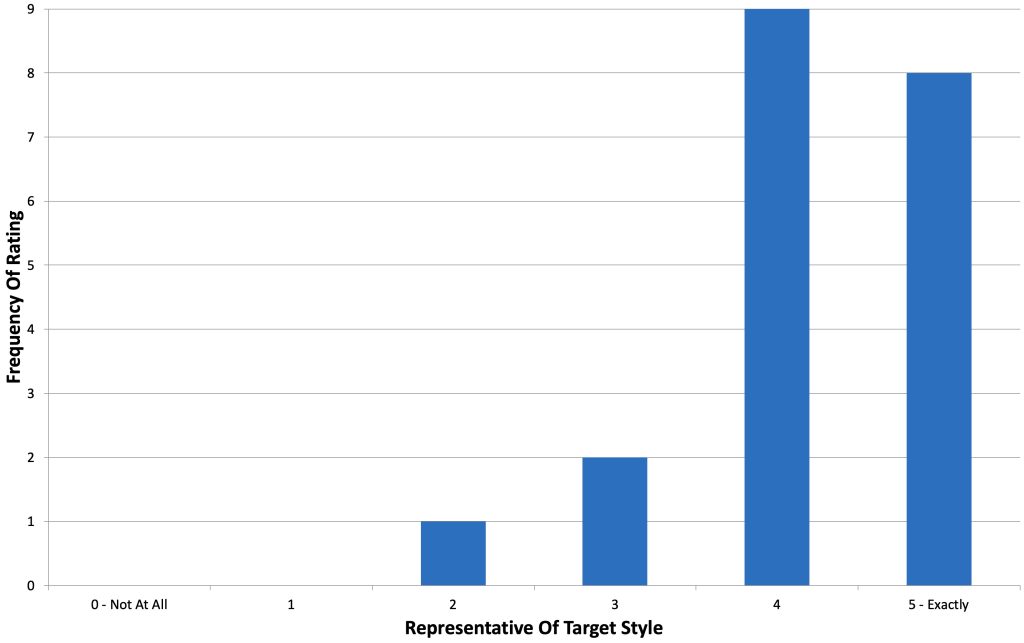Author: Will Lovell
When my wife and I lived in Germany, we enjoyed traveling to various cities quite a bit, and Bamburg was one that particularly stood out. In addition to being the home of Weyermann Specialty Malting, it’s also where Brauerei Spezial and Schlenkerla reside, two breweries that have kept the tradition of Rauchbier alive and well for nearly 5 centuries!
I recall my first time walking into Schlenkerla and sipping a pint of their classic smoked Märzen. It was truly an unforgettable experience. The intense smoke character was perfectly balance by the rich maltiness and tame noble hop bitterness, making it one of the most unique beers I’d had to that point. Loved by many and loathed by others, the BJCP provides the following description for Rauchbier:
A beechwood-smoked, malty, amber German lager. The expected Märzen profile of toasty-rich malt, restrained bitterness, clean fermentation, and a relatively dry finish is enhanced by a noticeable to intense smoke character.
While I typically reserve Märzen for the fall, there’s something about a good Rauchbier that just hits the spot during the blazing Texas summers, especially when it’s accompanied by some tasty BBQ! Seeing as it’s a lager style, brewing a Rauchbier using traditional methods involves an arguably convoluted and time-consuming process. However, last summer, I set out to see how one would fare when made with a less conventional approach.
| BREWING THE BEER |
Using ingredients I had on hand, I designed a Rauchbier recipe based off of past batches I felt were successful.
Short & Shoddy Rauchbier
Recipe Details
| Batch Size | Boil Time | IBU | SRM | Est. OG | Est. FG | ABV |
|---|---|---|---|---|---|---|
| 5.2 gal | 30 min | 26 | 12.8 SRM | 1.051 | 1.012 | 5.12 % |
| Actuals | 1.051 | 1.012 | 5.12 % | |||
Fermentables
| Name | Amount | % |
|---|---|---|
| Munich Malt | 7 lbs | 46.67 |
| Smoked Malt | 7 lbs | 46.67 |
| Crystal 60 | 12 oz | 5 |
| Melanoidin | 4 oz | 1.67 |
Hops
| Name | Amount | Time | Use | Form | Alpha % |
|---|---|---|---|---|---|
| Hersbrucker | 20 g | 30 min | Boil | Pellet | 4.3 |
| Magnum | 10 g | 30 min | Boil | Pellet | 16.5 |
| Hersbrucker | 20 g | 5 min | Boil | Pellet | 4.3 |
Yeast
| Name | Lab | Attenuation | Temperature |
|---|---|---|---|
| Global (L13) | Imperial Yeast | 77% | 32°F - 32°F |
Notes
| Water Profile: Ca 73 | Mg 0 | Na 8 | SO4 81 | Cl 52 |
Download
| Download this recipe's BeerXML file |
With a plan to brew after work one day, and having the luxury of working from home, I figured I’d save some time by collecting the water and milling the grains during my lunch break.
Having set my controller to start heating the water up a bit before my workday ended, the water was properly heated once I officially started brewing at 4:52 PM, at which point I incorporated the grains checked to ensure the mash was at my desired temperature.
During the mash rest, I prepared the kettle hop additions.
When the 30 minute mash was complete, I removed the grains and proceeded to boil for 30 minutes, adding hops at the times stated in the recipe.
Once the boil was finished, I quickly chilled the wort as cool as I could get it with my tap water, which was 77°F/25°C, then transferred it to a sanitized Kegmenter.
A refractometer reading showed the wort was at 1.051 OG, indicating a 50% brewhouse efficiency.

The fermenter was placed my fermentation chamber controlled to 66°F/19°C before I pitched a single pouch of Imperial Yeast L13 Global into the warm wort. The time was 7:16 PM for a total brew day duration of just 2 hours and 24 minutes.
With signs of activity absent after 5 days, I took a hydrometer measurement showing FG had been reached.

At this point, I cold crashed the beer overnight then pressure-transferred it to a CO2 purged keg, which was placed in my kegerator and burst carbonated at 40 psi for 15 hours before the gas was reduced to serving pressure. After a couple weeks of conditioning, it was carbonated and ready to serve to tasters.
| RESULTS |
A total of 20 people of various levels of experience participated in this Short & Shoddy evaluation. Participants were informed of the specific beer style and provided the BJCP description prior to completing the survey. Tasters were then instructed to rate how hoppy, malty, and dry they perceived the beer to be on a 0-5 scale where a rating of 0 indicated “not at all” and 5 indicated “extremely.”
Tasters were provided a list of common hop, malt, and yeast characteristics then instructed to select from each the one they perceived as being most prominent in the beer.
Hop Characteristics
Malt Characteristics
Yeast Characteristics
Next, participants were asked to indicate whether or not they detected any off-flavors in the beer; those who did were provided a list of common off-flavors and instructed to select the ones they perceived as being strongest. Of the 20 tasters, one reported perceiving acetaldehyde and phenolics, while another two reported only detecting phenolics.
Tasters were then asked to rate how well the beer represented the intended style, based on the provided BJCP description, on a 0-5 scale where 0 meant “not at all” and 5 meant “exactly.”
Finally, tasters were asked to rate how much they enjoyed the beer on a 0-5 scale where 0 indicated not at all and 5 indicated extremely.
My Impressions: This beer was everything I’d hoped for when designing and brewing it. The smoke character paired with the malty backbone from the Munich malt made it an absolute delight to drink, and I didn’t pick up anything off about it. A smoking fast brew day that turned into a smoking good beer – it Rauch’d!
| CONCLUSION |
Stemming from the rudimentary process of drying malted grains over an open flame, smoked beers have purportedly been around for over 5,000 years, in fact it’s likely all beers produced prior to the invention of the kiln had some smoke character. Despite this long history and the efforts by some to keep the style alive, Rauchbier is rather divisive, with some feeling the smokiness is reminiscent of anything from ham to ashtrays, while others feel it contributes a uniquely delicious note to beer.
As a lager style, Rauchbier is typically made using the accepted methods for producing a clean, crisp lager including extended mash rests, high yeast pitch rates, cool fermentation temperature, and extended lagering time. Interestingly, tasters of this Short & Shoddy version that was made with an abbreviated mash and boil, pitched with a single pouch of yeast, fermented at ale temperature, and left to lager for just 2 weeks not only felt it was a solid representation of the style, but seemed to enjoy drinking it as well. While 3 tasters noted a phenolic off-flavor, there’s a chance this is due to the description provided in the survey of phenolic as being “smoky.” Other than that, all other ratings seemed solidly inline with what one might expect from a Rauchbier.
Since my first time drinking a Rauchbier in Bamburg, I’ve developed a bit of an obsession with the style and have sampled many. As pleased I was with the responses of those who blindly evaluated this beer, I was even more happy with how the beer turned out, as it had all of the characteristics I’ve come to expect from a great Rauchbier. What’s more is it took me less than 3 hours to brew, which is a fantastic thing during the heat of summer, so I’ll certainly be making it again in the future!
If you have thoughts about this Short & Shoddy brew, please feel free to share it in the comments section below!
Support Brülosophy In Style!
All designs are available in various colors and sizes on Amazon!
Follow Brülosophy on:
FACEBOOK | TWITTER | INSTAGRAM
If you enjoy this stuff and feel compelled to support Brulosophy.com, please check out the Support page for details on how you can very easily do so. Thanks!


























6 thoughts on “Short & Shoddy | Rauchbier”
Was in Bamberg this fall. What a great beer town. Got full tour of Schlenkerla. How do you think it compared? Thanks for doing this S&S.
I will say it reminds me of Schlenkerla, but I can’t say that it tastes exactly like it. I think using Beechwood smoked malt is really important to get that Bamberg feel.
Thanks for another great article. That seems like a lot of smoked malt. Which maltster did you use?
Weyermann Rauchmalt is really nice and I have no issues pushing 50% and beyond. They say you can go up to 100%, but that might be a bit too smoky.
I have a medal winning Rauchbier recipe using 60% smoked malt (Weyerman Rauchmalt). Seems about right. Must be a beech wood smoked malt, not cherrywood. (I do have a really nice cherrywood smoked porter on tap, but that’s a whole different genre.)
Looks great. Have a Rauchbier on tap myself that was based on the published NHC gold medal from last year. 38.7% smoked malt. I think if I pushed it higher, the guys in my club and I would be the only ones drinking it. My non-brewing friends can only handle one pint of it now!